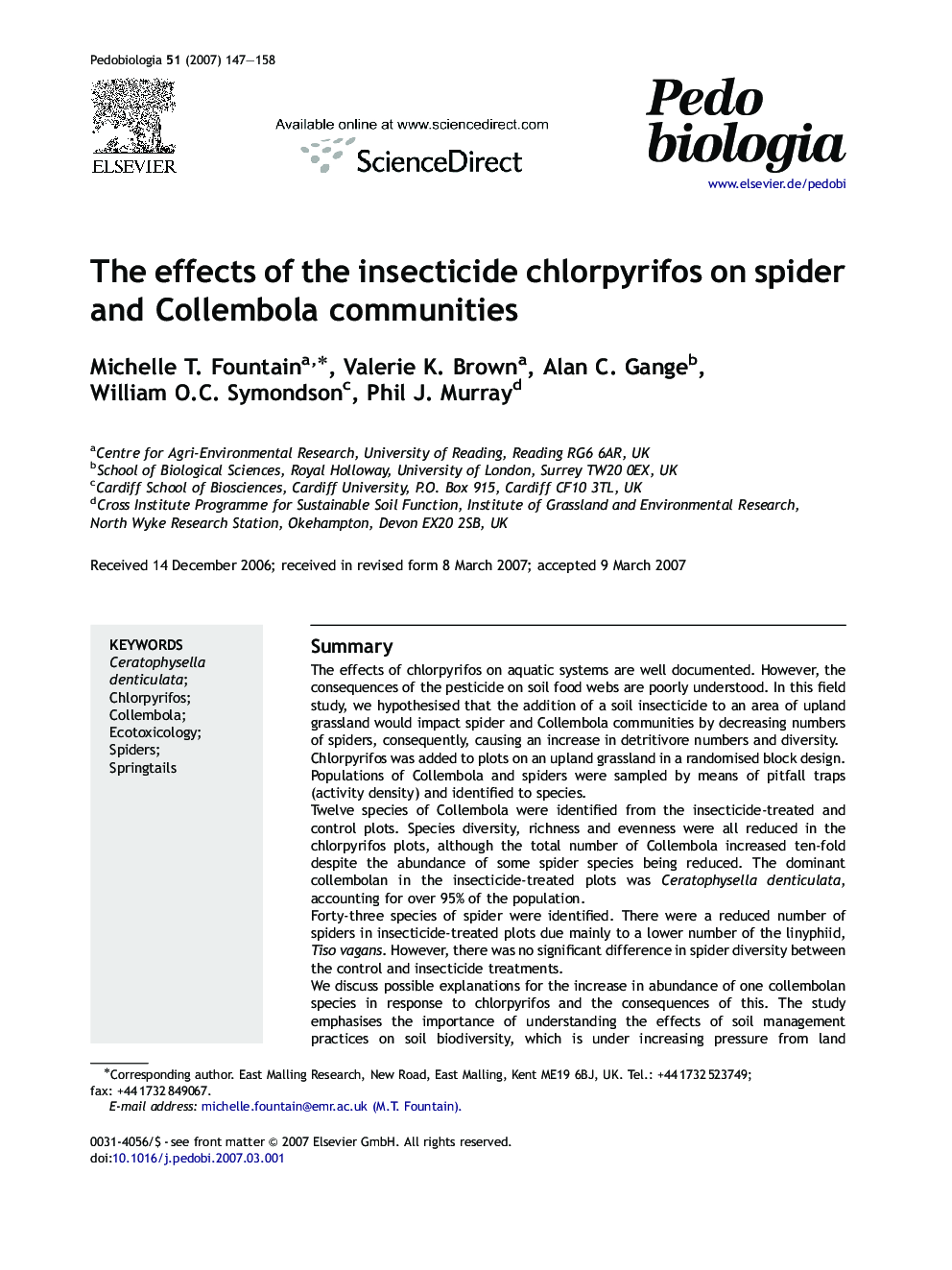| Article ID | Journal | Published Year | Pages | File Type |
|---|---|---|---|---|
| 2061270 | Pedobiologia | 2007 | 12 Pages |
SummaryThe effects of chlorpyrifos on aquatic systems are well documented. However, the consequences of the pesticide on soil food webs are poorly understood. In this field study, we hypothesised that the addition of a soil insecticide to an area of upland grassland would impact spider and Collembola communities by decreasing numbers of spiders, consequently, causing an increase in detritivore numbers and diversity.Chlorpyrifos was added to plots on an upland grassland in a randomised block design. Populations of Collembola and spiders were sampled by means of pitfall traps (activity density) and identified to species.Twelve species of Collembola were identified from the insecticide-treated and control plots. Species diversity, richness and evenness were all reduced in the chlorpyrifos plots, although the total number of Collembola increased ten-fold despite the abundance of some spider species being reduced. The dominant collembolan in the insecticide-treated plots was Ceratophysella denticulata, accounting for over 95% of the population.Forty-three species of spider were identified. There were a reduced number of spiders in insecticide-treated plots due mainly to a lower number of the linyphiid, Tiso vagans. However, there was no significant difference in spider diversity between the control and insecticide treatments.We discuss possible explanations for the increase in abundance of one collembolan species in response to chlorpyrifos and the consequences of this. The study emphasises the importance of understanding the effects of soil management practices on soil biodiversity, which is under increasing pressure from land development and food production. It also highlights the need for identification of soil invertebrates to an ‘appropriate’ taxonomic level for biodiversity estimates.
